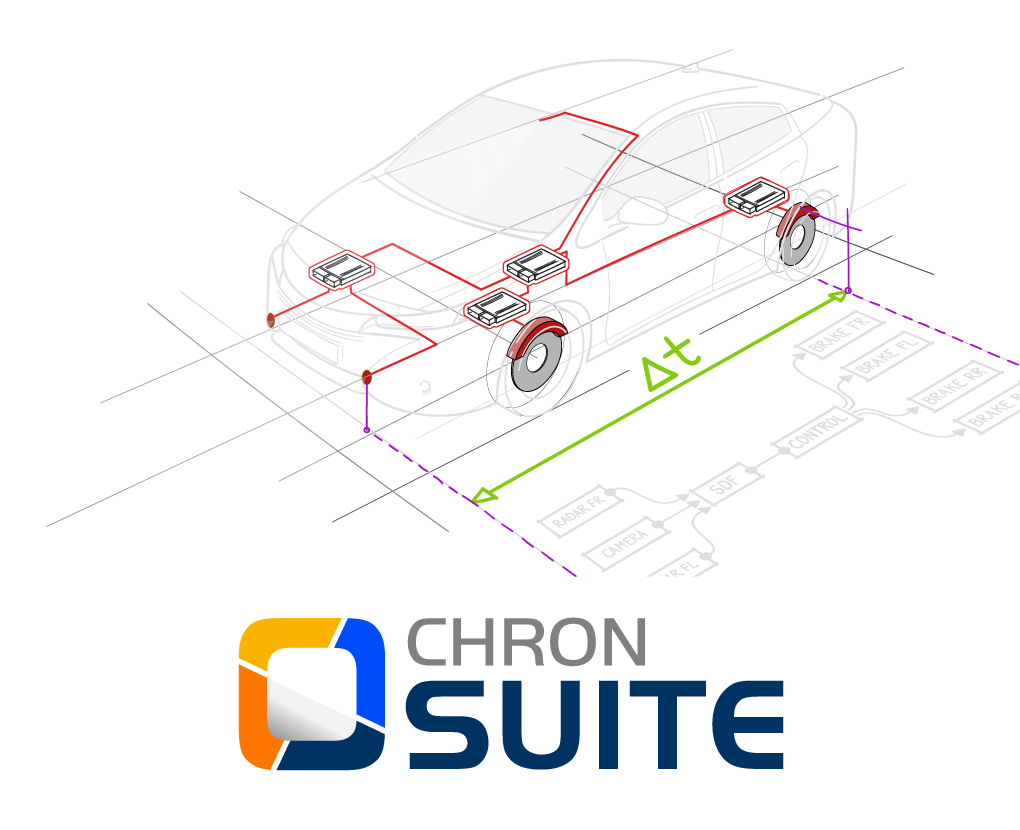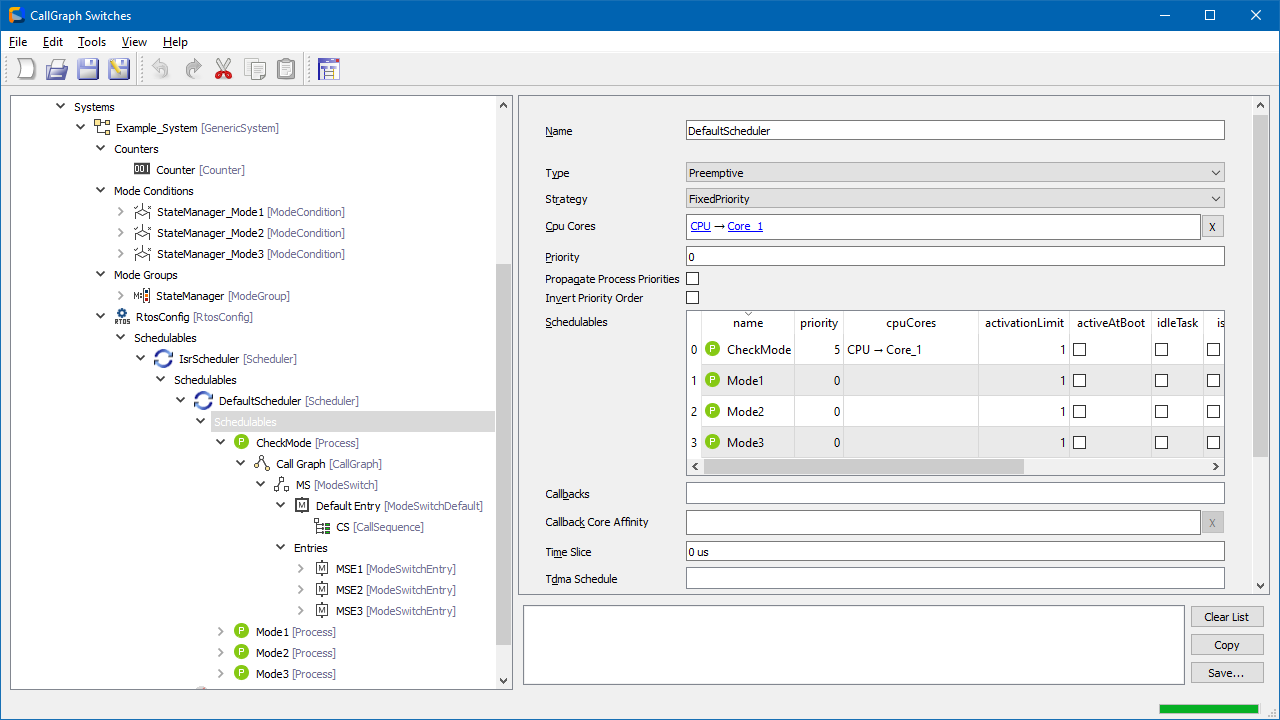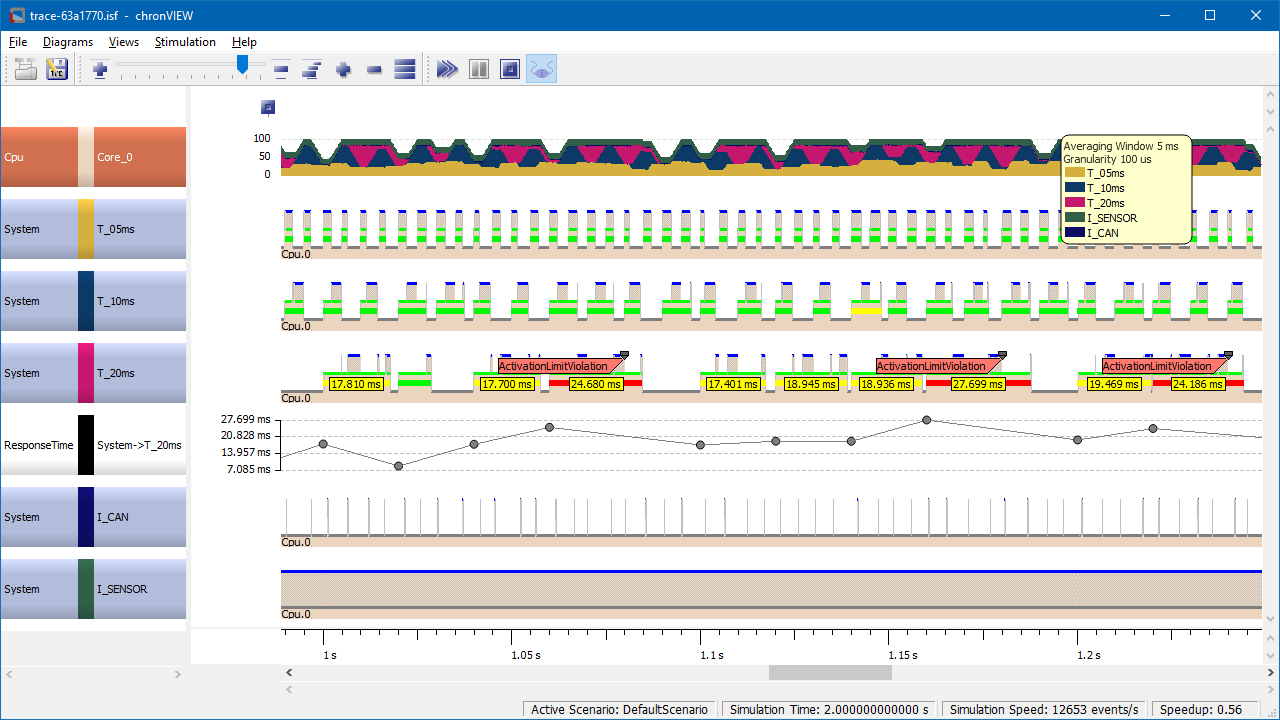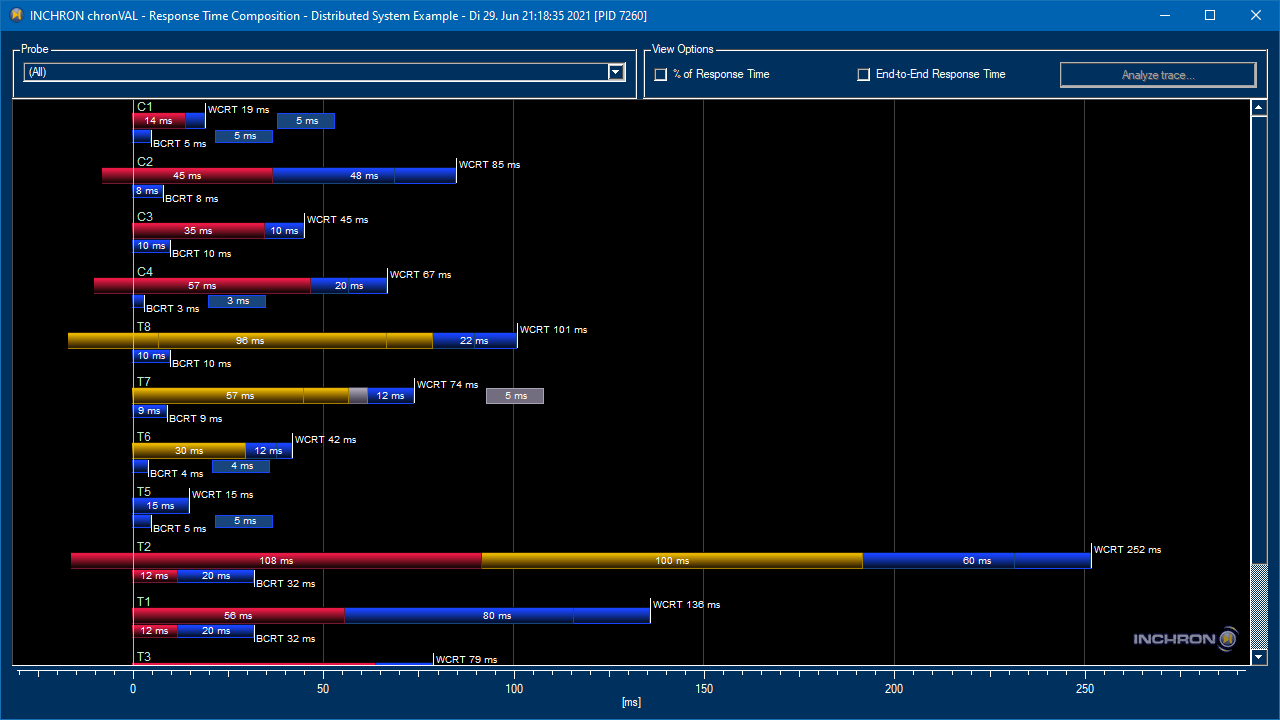chronSUITE
The Leading Toolkit for Timing Optimization

Build reliable and robust embedded real-time systems. Simulate design alternatives, visualize trace data, verify timing and performance requirements, and find and fix errors efficiently.
For architects, developers, integrators, and testers.
Timing Is Too Complex to Ignore
For years, embedded systems developers have focused on the functional requirements of their applications. However, today’s applications require that timing is given the same level of importance as function and safety.
chronSUITE supports embedded software development teams by ensuring that timing requirements are defined and then fulfilled, from the definition of the architecture through to system testing.

Application Domains
Automotive is well known for its focus on quality. With everything now implemented electronically, it is essential that software across multiple ECUs is synchronized and that sensor data is guaranteed to arrive on time, every time.
Whether in the chassis, body, or powertrain, chronSUITE helps the development team to ensure timing issues are found and resolved long before final testing.
As the industry moves functionality into large SoCs and HPCs, our toolkit delivers clarity when debugging complex data flows from sensors feeding into ADAS and autonomous driving platforms.
Sensor Data Fusion in High Performance Domain Controllers
Understanding the Effects of Clock Drift and Asynchronicity
Migration to Multicore and High-Performance SoCs
End-to-End Analysis of Distributed Functions in Vehicle Networks
Key Features
- Simulation of RTOS scheduling and heterogeneous SoC hardware architectures
- Simulation of queued communication and event chains
- Simulation of LIN, CAN, FlexRay, and Ethernet networks
- Interactive trace visualization and statistical analysis for CSV, BTF, Infineon MCDS, Gliwa T1, iSYSTEM, Lauterbach, ASAM ARTI, etc.
- Automated verification of timing and performance requirements
- Schedulability analysis and formal timing verification for safety-critical systems
- Importer for OSEK, CAN DBC, Fibex, AUTOSAR, and APP4MC AMALTHEA models
- Model generation and workflow automation (EMF Ecore, Python, Batch/CLI, REST API)
“Through simulations we found errors 12 months earlier than usual, were able to understand the root causes, and then solved them efficiently.”
Architect ADAS


Model-based simulation of the real-time behavior of embedded systems. Design optimization and test against formal timing requirements prior to implementation. Supports multicore, HPC, AUTOSAR, and many more.
Trace-based visualization and analysis of timing. Extensive data representation. Formal timing requirement evaluation. HTML reporting. Windows/Linux GUI and workflow automation in batch mode and CI/CD pipelines.
“The early use of INCHRON’s methodology in our multi-domain controller project (Central Vehicle Manager, CVM) provided a solid system architecture with respect to timing. Later project phases were less stressful because frustrating, timing-related sporadic failures did not occur.”
Which tool best fits your needs?
It is critical to develop an appreciation for timing across the entire development process, and not just assume it will be resolved by your system architects. At each step of the way, the tools within chronSUITE contribute in a different way to enable resolution of the timing challenges faced.
Discover how prepared your automotive software development process is for keeping on top of timing issues with our Timing Checklist Assessment.
Selected Customers





Team Benefits
Architect
Understand ECU timing before any code has been written.
Know the impact of moving functionality between cores, and the peak throughput of data busses.
Define timing budgets; use throughout project to ensure compliance.
Developer
Create code to fulfill timing requirements in addition to functional requirements.
Verify your design, even when the hardware is not yet available, or when code sections are missing.
Compare trace results with simulations; find bottlenecks; analyze event chains.
Manager
Determine cause of hard-to-find, random sporadic issues up to 12 months earlier.
Keep projects on track and on budget, freeing up resources for other tasks earlier.
Respond rapidly to RFQs thanks to rapid results from modeling and simulation.
Integrator
Prove that integrated software fulfills both timing and functional requirements.
Pinpoint the cause of issues with easy-to-use tools.
Support issue analysis with the data required to solve the problem.
Tester
Guarantee that timing requirements are fulfilled for every project.
Use CI/CD pipelines to automatically test timing requirements.
Have test results to hand when required for rapid issue resolution.
Team Leader
Remain on top of timing-related issues throughout the project.
Access data that allows the replication of issues and proves their resolution.
Use common tools to verify that timing requirements are fulfilled.







